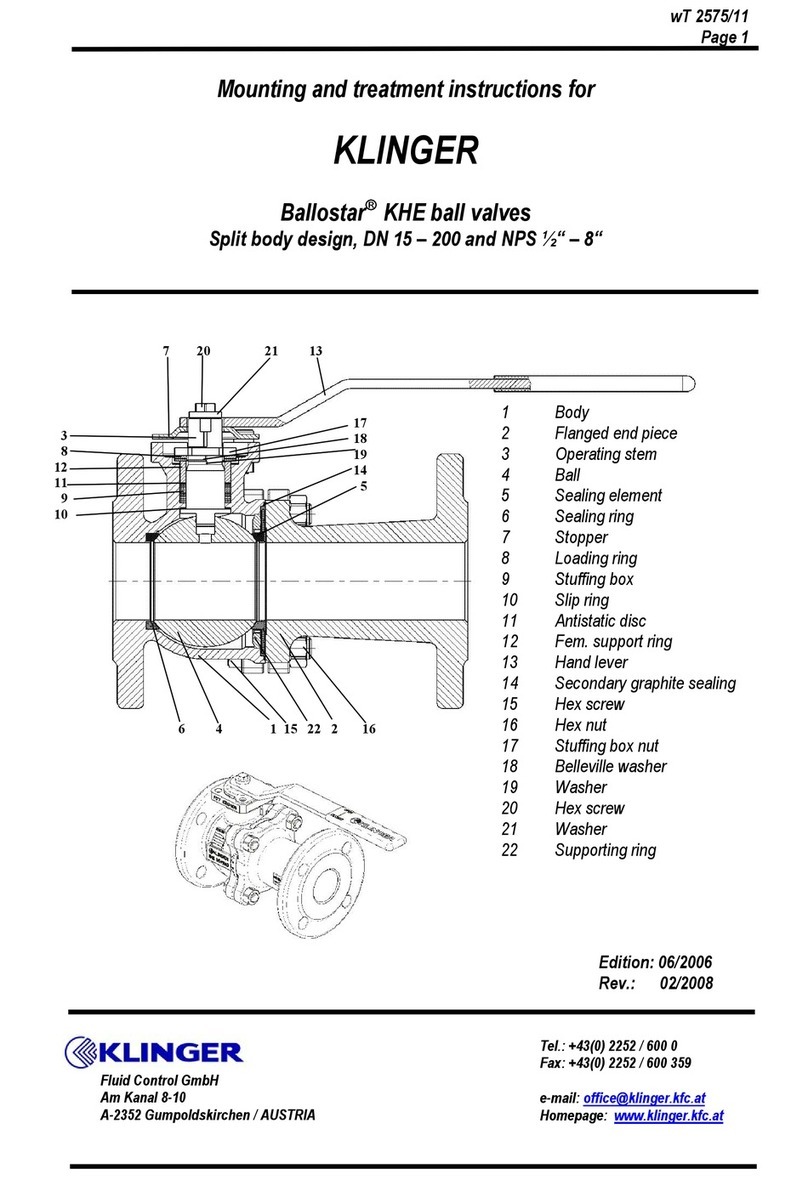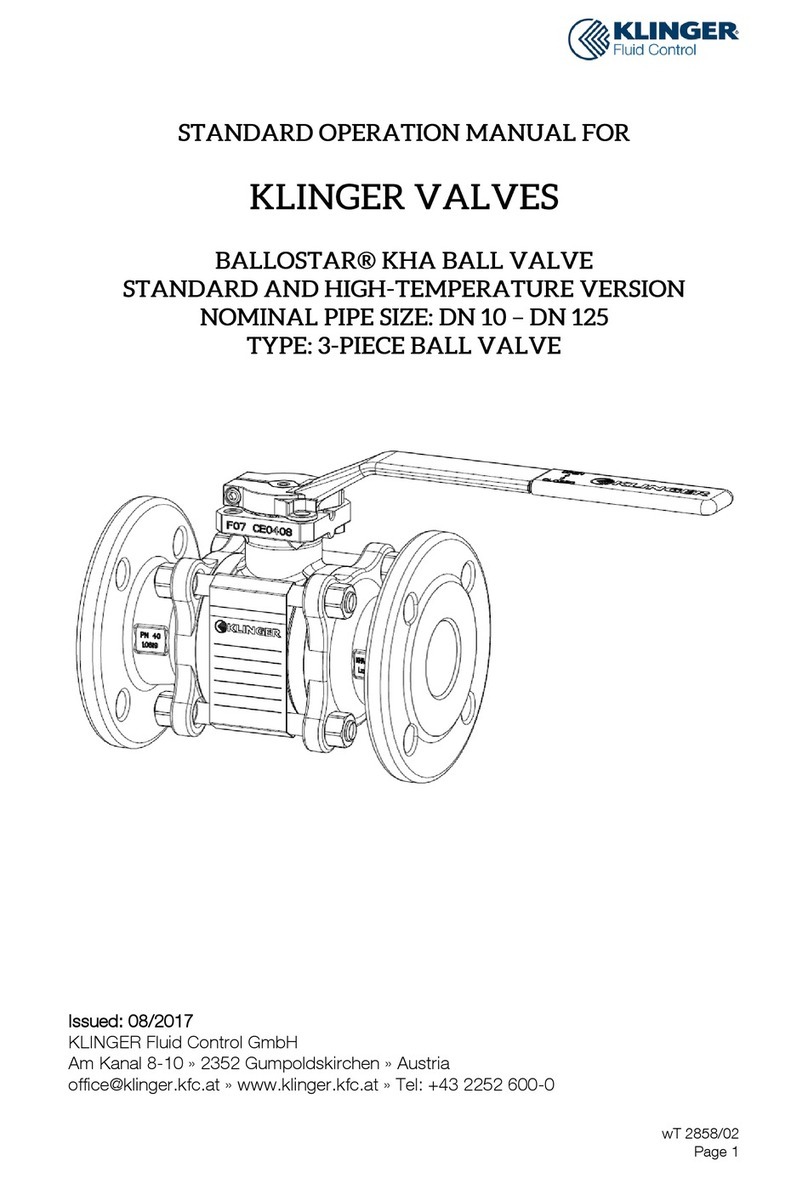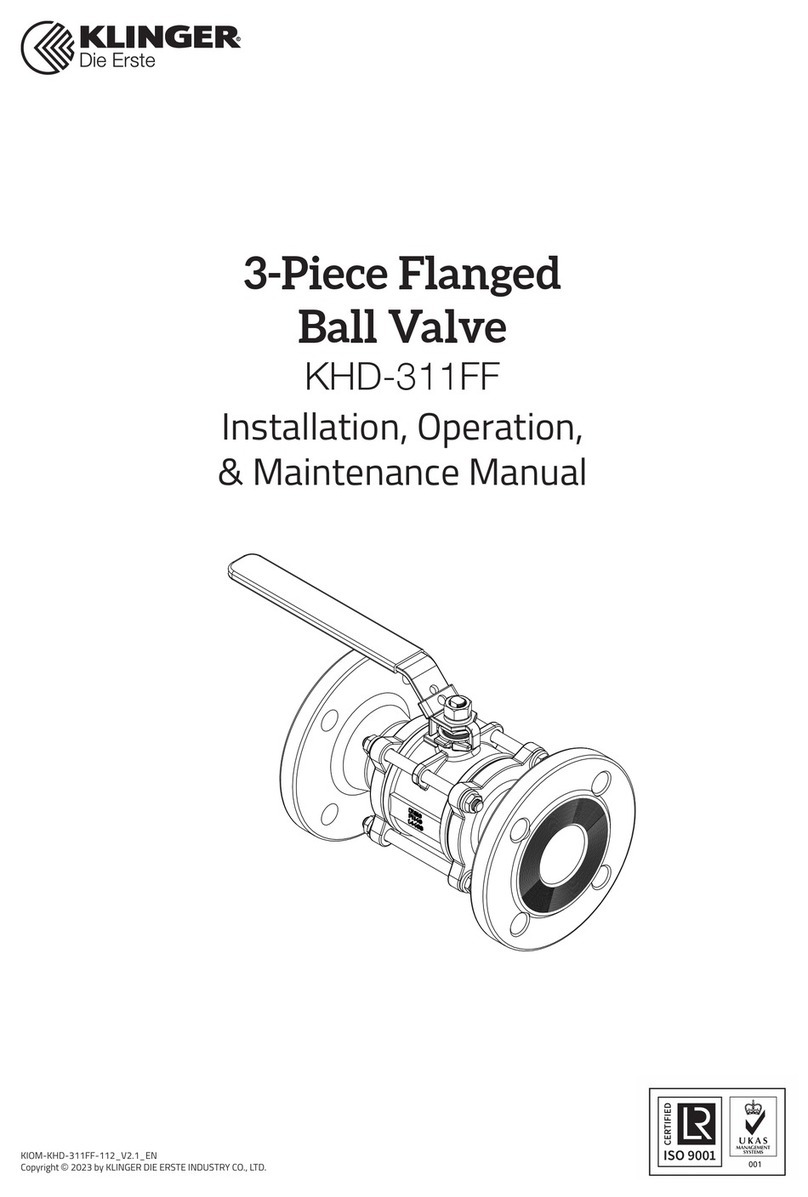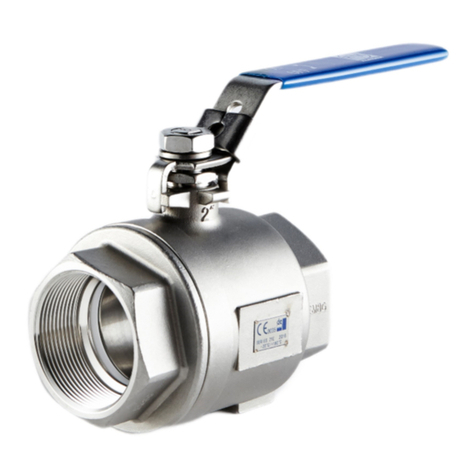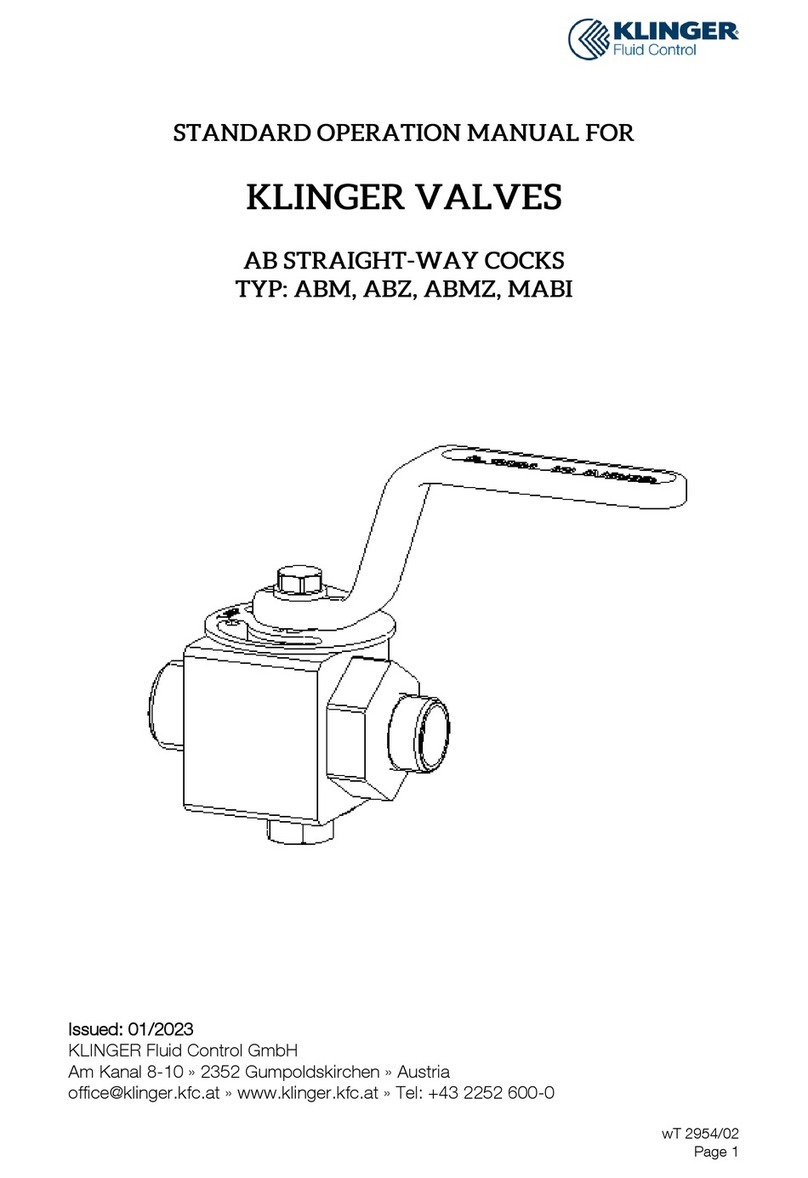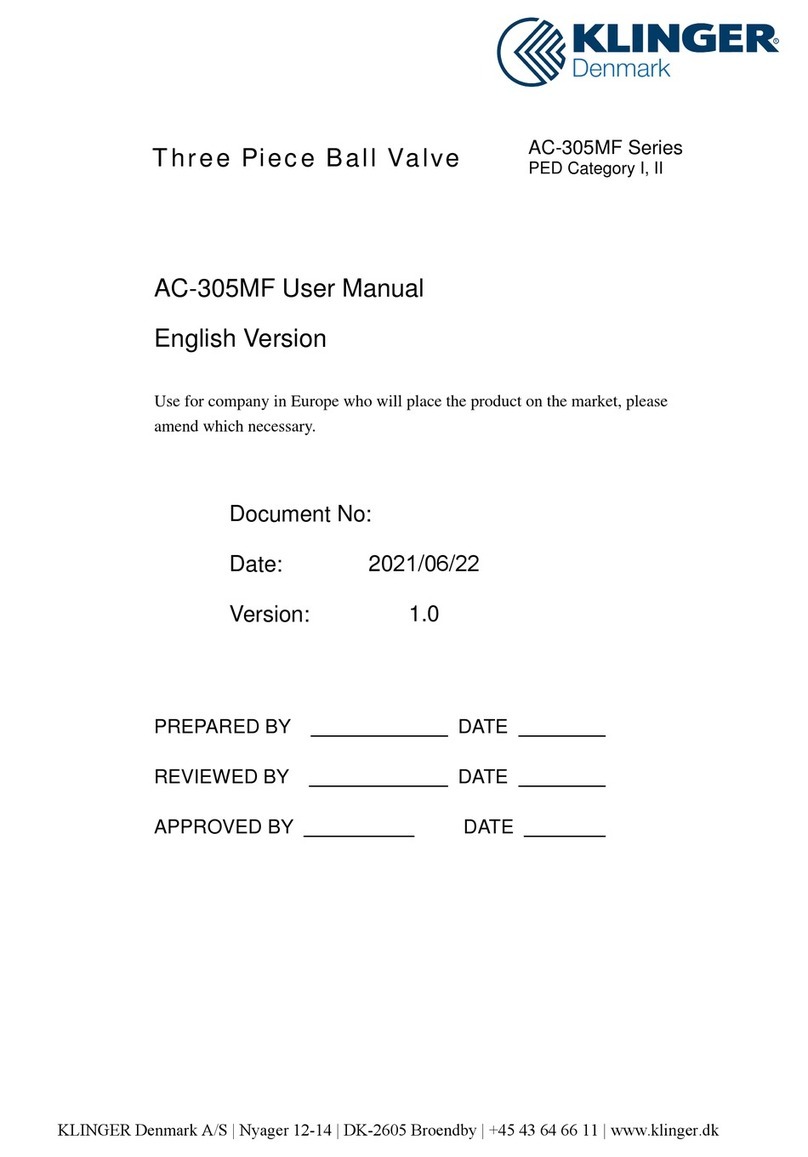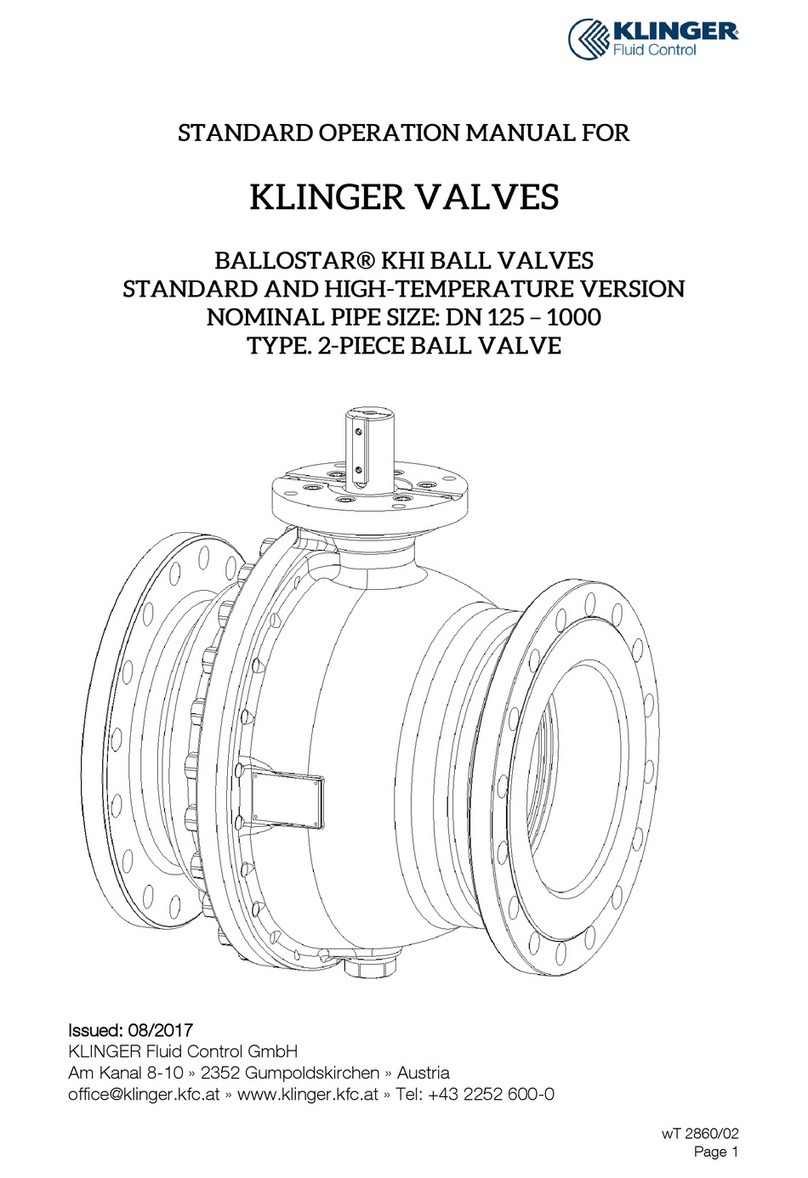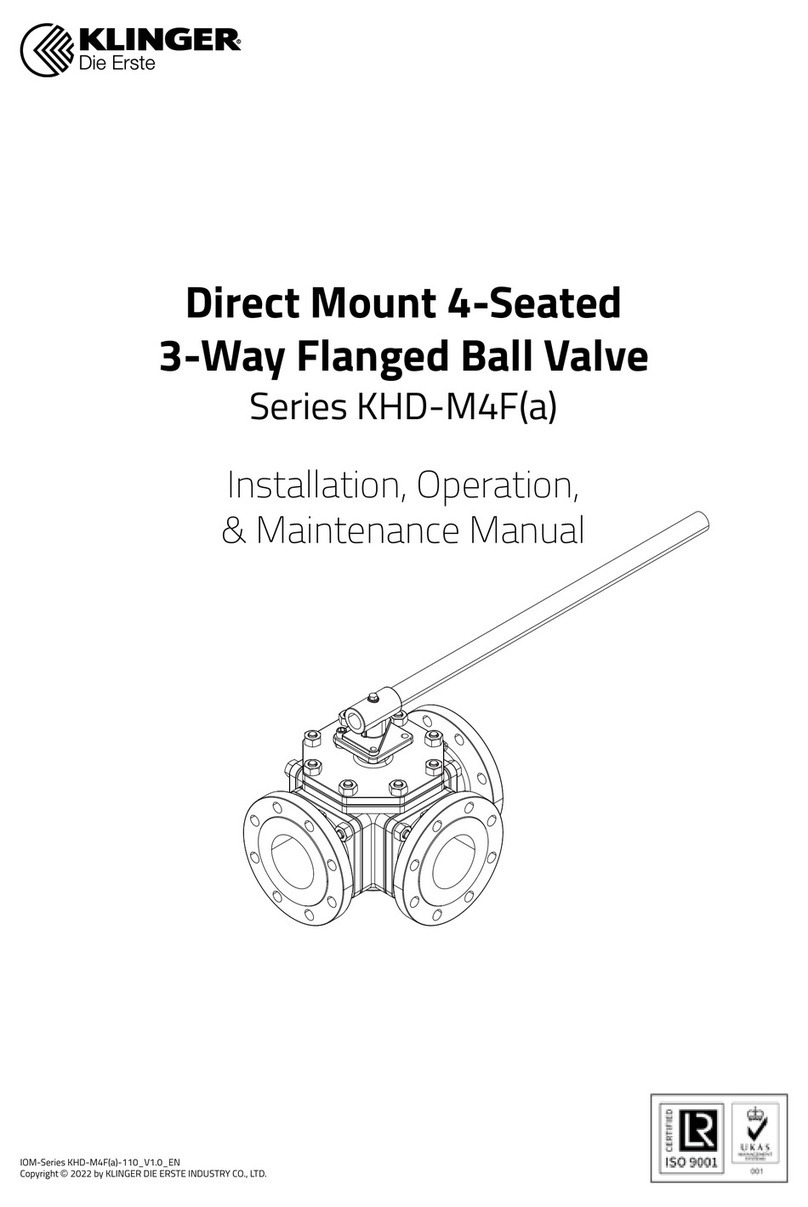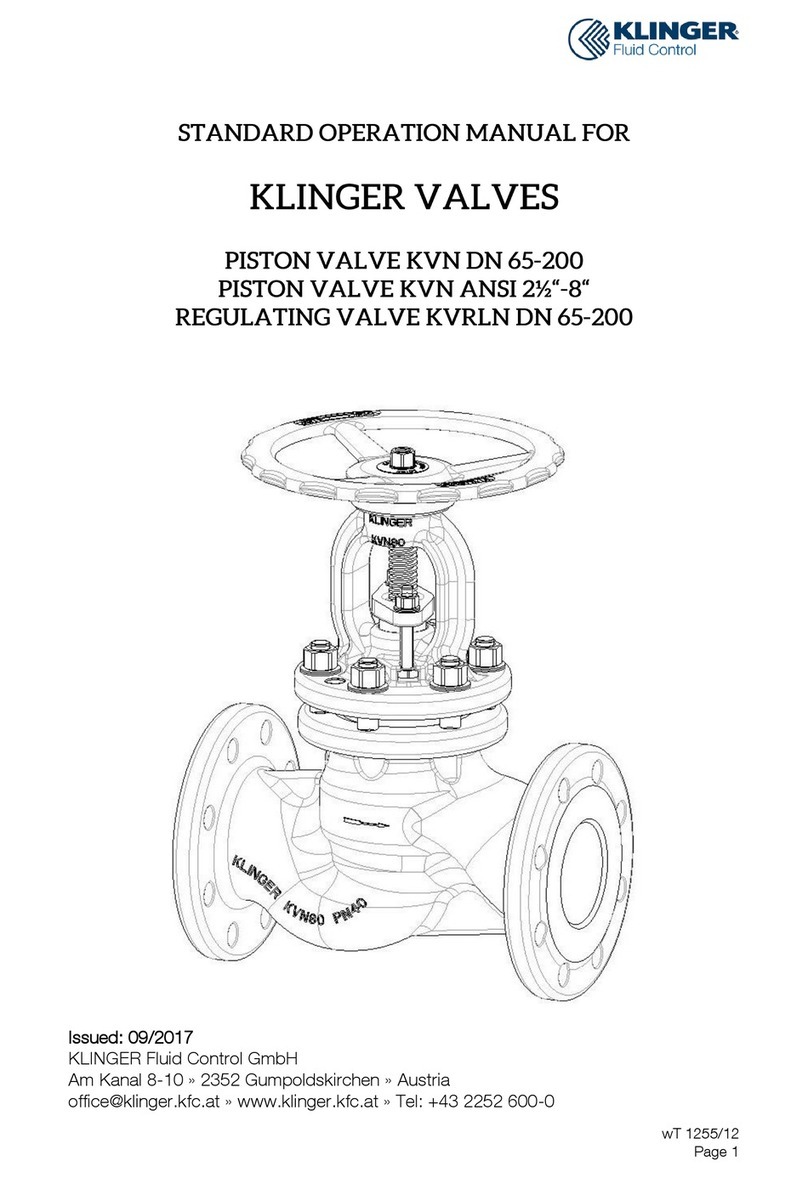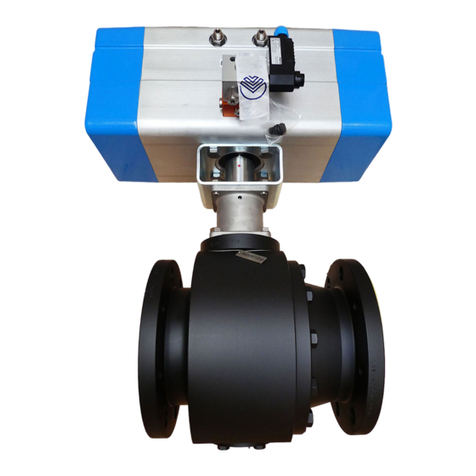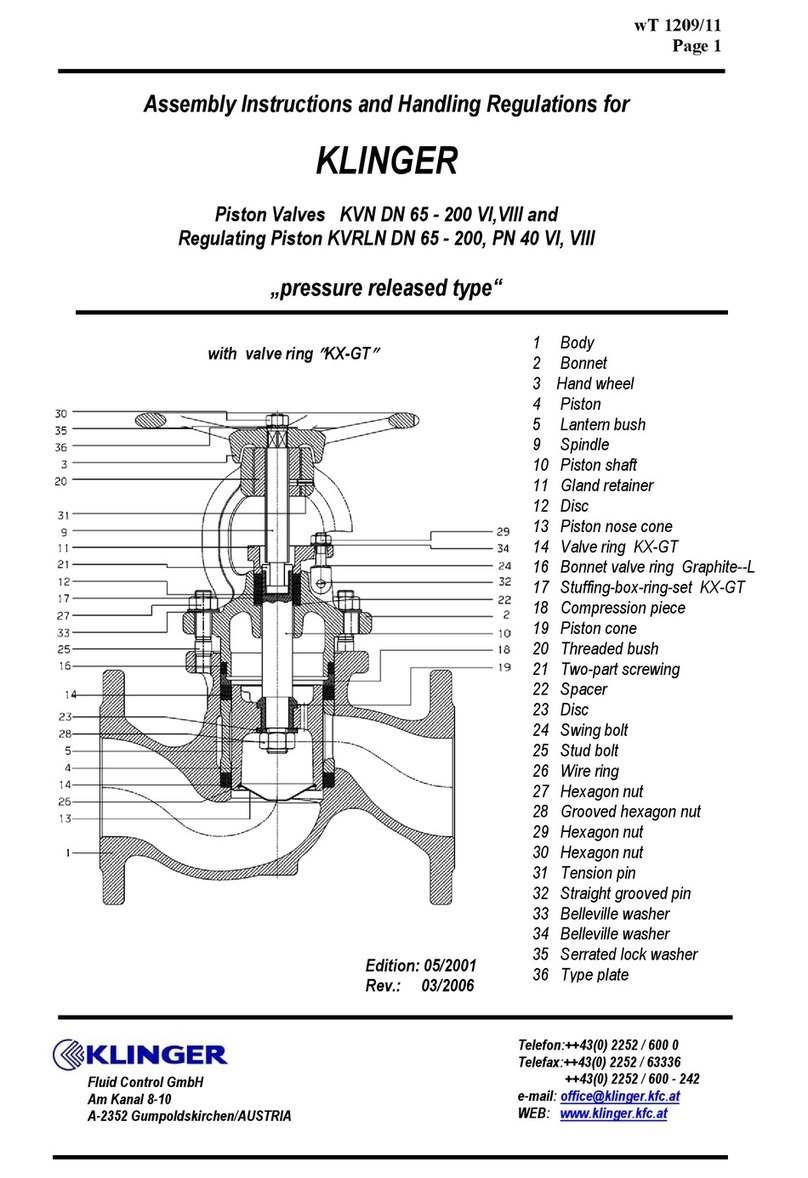wT 2954/02
Page 7
»when applying internal pressure for the first time (pressure test, trial operation) a
sufficient safety distance is to be maintained.
»it is prohibited to open screw connections (with the exception of those on hand
levers and handwheels), when pressurized (medium).
»installation and removal of valves is only carried out with a depressurized and
drained pipeline.
»all connections, following loosening, are again correctly tightened afterwards.
»no screws are loosened on pressure-retaining parts, unless described so in the
operation manual.
»no screwed connections are forcibly opened.
»during longer shutdown periods, in the event of freezing media, the valve is drained
and/or that depressurization is achieved in case of expanding media.
6.3 Hazard Warnings
Mechanical hazards:
»Beware of possible sharp or protruding parts posing risk of injury.
»Extra care is required during putting into operation: Do not reach into the bore
opening during the valve closing process, as this poses a risk of injury.
»Be careful of falling parts during transportation, maintenance and putting into
operation.
»When manipulating lifting appliances, the safety regulations for lifting appliances
must be complied with.
»Unauthorized and improper handling can result in undesired and spontaneous
pressure loss and can result in significant damage.
»With regard to valves featuring a mounting bracket it must be ensured that moving
valve parts do not result in a risk of injury.
Electrical hazards:
»With regard to valves featuring electric actuators, the operating manual and the
safety instructions of the actuator manufacturer must be complied with.
Thermal hazards:
»During operation, the surfaces of valves may feature high / low temperatures.
Caution: Burn hazard.
»Caution: The hot surfaces can cause self-ignition of flammable materials through
either contact or heat emission.
Hazard generated by noise:
»Depending on the application conditions, high levels of noise can be created by
the cavitation processes, which bear the risk of hearing damage.
»Opening an internally pressurized valve can result in major noise exposure as a
result of exiting media; hearing damage hazard.
Vibration hazard:
»Caution: Abrupt opening or closing of a valve can lead to undesired surges and
vibrations in the pipe, which may possibly damage the valve or the pipeline system.

